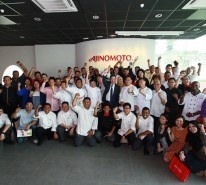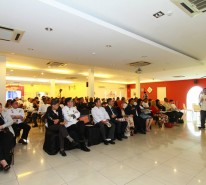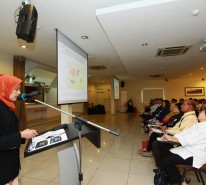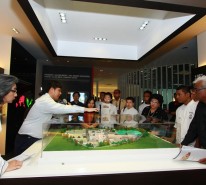‘Unlocking the secrets of the fifth basic taste – Umami’ The first-ever Food Science, Tasting and Sensorial Experience Workshop on Umami for Professional Chefs
Kuala Lumpur – September 11, 2014 – Umami has been used by chefs globally for centuries, but most chefs still think Umami is related to Japanese cuisine only. It is interesting to discover that Umami is found in other types of food too, such as tomatoes, cheese, mushroom and even mother’s milk; that they are frequently used in international cuisine without much awareness.
Come September 11, 2014, professional chefs have a chance to learn, taste and experience first-hand about Umami – the fifth basic taste at a culinary tasting and sensorial workshop at the Ajinomoto Culinary Theatre & Umami Exhibition Centre in Jalan Kuchai Lama, Kuala Lumpur. This workshop is specially designed for chefs to discover, learn and share significant knowledge and findings on Umami; to create delicious dishes that are satisfying to the taste buds.
For this purpose, three guest speakers: Dr Jinap Selamat, Professor from Faculty of Food Science & Technology, Universiti Putra Malaysia, Takashi Kimura, Executive Chef of Cilantro Restaurant and Richmond Lim, Executive Chef of the Kuala Lumpur Convention Centre have been specially invited to share insightful information and findings on Umami and Umami-rich ingredients found in Japanese and International cuisine at the first-ever ‘Unlocking the secret of Umami, the Universal fifth basic taste – Food Science, Tasting and Sensorial Experience’ workshop for professional chefs.
According to Managing Director and Chief Executive Officer of Ajinomoto (Malaysia) Berhad Ryoichi Ebata, the workshop is aimed at increasing awareness of Umami, the universal fifth basic taste as useful knowledge for chefs in the creation of delicious, fully satisfying dishes. “The Umami workshop aims to educate chefs and foodservice professionals about Umami, highlight umami-rich ingredients in different cuisines and how they work together in balancing the taste and flavour of every dish in line with Ajinomoto’s Eat Well, Live Well philosophy.”
The workshop commenced with Professor Dr Jinap Selamat presenting interesting findings about Umami and extensive research and development work centred on the unique taste profile. She explained in-depth about Umami as well as how Umami receptors were discovered on human tongues by scientists in the year 2000.
Professor Dr Jinap also shared with workshop attendees on the functional role of Monosodium Glutamate or Umami seasoning, “Sodium content in pure Umami seasoning is three times lower of that of table salt,” says Professor Dr Jinap. “Thus when pure Umami seasoning is correctly applied in cooking, it can reduce up to 30 percent of sodium use.”
To enhance the learning experience further for attendees, veteran chefs Takashi Kimura presented the discovery of Umami and Richmond Lim demonstrated the versatility and applications of Umami in different cuisines. Both chefs also conducted tasting sessions of various umami-rich food combinations.
Finally, a visit to the Ajinomoto’s Umami Exhibition Centre wrapped up the day’s interactive session of understanding how significant of Umami in assisting chefs to develop delicious dishes for their discerning guests.




